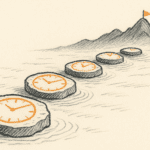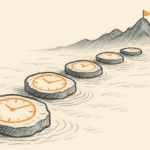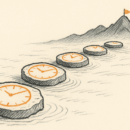Why books are still booming in the digital era

This wasn’t supposed to happen.
The prolonged global pandemic accelerated all things digital. We embraced electronic ways of doing things: digital payments, virtual meetings, online shopping, video streaming, instant messaging, web-based learning. Devices and software boomed as never before; many old ways of doing things took a permanent hit. Using cash, going to cinemas, travelling across town for single business meetings—are you still doing that?
The printed book was supposed to be one of the casualties. Ebooks are quicker to get hold of (one click!); they are more convenient to carry around (one device!); and they are cheaper than their printed counterparts (ten bucks!). When lockdowns became widespread and protracted, you would have been forgiven for predicting that sales of printed books would plunge.
Actually, book sales in many countries broke records in 2020, and continued to be strong in 2021. Ebooks do sell well, but they have settled into a peaceful coexistence with their more clunky, more cumbersome, more expensive printed-and-bound forebears. Readers kept reading books, and kept buying them. Old-fashioned books have held strong. Why should that be?
In a word, the experience. Those who love printed books love many things about them, not just the contents. They love the covers; they love the tactile pleasure of turning real pages; they even love the smell of a book. Also, studies show that we retain more when reading printed pages, partly because memory is spatial and our brains appreciate being able to note, visually, where we have reached in a book.
I, for one, read many more books in 2020 and 2021 than in previous years. There were many reasons for this. First, I read a whole lot more in general, having been caught flat-footed by the coronavirus. I had to teach myself many new things to get to grips with the weirdness in the world, and books remain the best technology for imparting deep knowledge. Second, I could not travel in person for the longest time, but still traversed the globe via evocative stories set in far-off places. And lastly, books are my comfort zone, my safe place, my haven of peace. When I am troubled, I read.
The book, and particularly the printed book, is not a transaction; it is a multifaceted experience. When you pay for a book, you are not just buying intellectual stimulation or personal growth; you are also investing in an emotional encounter and a pleasurable pastime. That is why books are robust and antifragile. Those who love them, love them to bits, for a multitude of reasons. They are not just a purchase; they are a habit, a culture, a way of life.
There is a lesson there for anyone selling anything. Digital convenience means that sooner or later, most straightforward purchases will move to the web and the smartphone. We will flick to browse, tap to buy, tap to pay, and tap to initiate delivery. In-person buying cannot compete with that—unless there is a whole set of reasons that the old-fashioned way is preferred. You can’t compete with digital on convenience, but you can best it in other ways—just like the book has.
People will only come to your physical shop or bank branch or movie theatre if you give some very strong reasons to do just that. What is it that digital can’t do? Deliver things like affinity, sensitivity, or corporeal pleasure. People who enjoy talking about books with other book-lovers still visit bookshops and join book clubs. People who need and appreciate good expert advice still visit bank branches. Those who like trying clothes on will still brave the traffic to go where there is a changing room and friendly assistants.
That’s a recent theme of this column: that we must humanize as we digitize. We must invest in humans, not only to run our digital engines, but to give something special to our human customers: empathy, sympathy, and understanding. Use technology to remove frictions and improve convenience; use humans to make human connections.
This applies to bookshops as well, who cannot rest on their laurels. If a bookshop is nothing more than a selection and a checkout desk, then Amazon wins every time. If it is a cathedral for bibliophiles, staffed by those who love books and love talking about them, then the devout will continue to gather in numbers. Also, bookstores must use tech to their advantage. TikTok and Instagram are where book-buzz is created these days; those are tricks to be learned, even by the old-school old-timers of the trade.
To end on a personal note: I read 100 books in 2020 and 95 in 2021. This year, four months in, I am at a more sedate total of 23. I will still surpass my annual floor of 50 books; but with the pandemic years hopefully behind us, I intend to be more selective and deliberate about my choices. What about you?
(Sunday Nation, 15 May 2022)

Buy Sunny Bindra's new book
The X in CX
here »
Popular Posts
- Where are you rushing to—your funeral?June 29, 2025
- How to spot a real thinkerJune 15, 2025
- The pause that saves usJune 8, 2025
- Built the app, forgot the flowJune 22, 2025
- The map will appear—once you start walking.July 6, 2025















